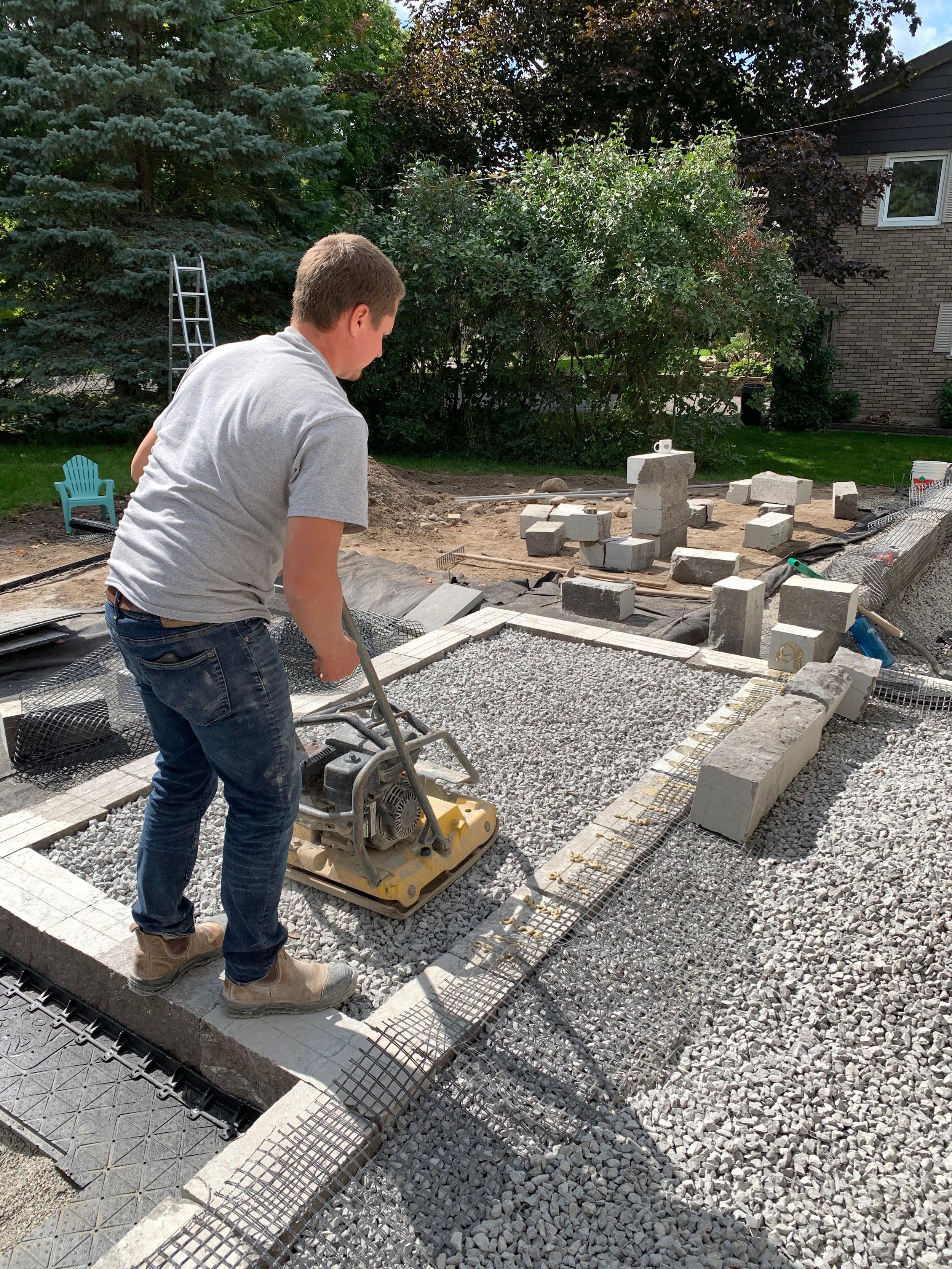Pros And Cons Of Hybrid Base
Hybrid installations have quickly gained popularity. While they offer numerous benefits, they don’t fit every job. In this post, we’ll outline the pros and cons of this installation method to shine some light on the best scenarios for using it.
Hybrid base is growing in popularity but, as of yet, there is still no real standard. While it might be an optimal solution for some applications, it’s not ideal for all. Let’s take a look at some of the major benefits afforded by a hybrid base:
Less compaction
Faster screeding
Ability to work in the rain and freezing temperatures
Potentially better drainage
The installation of a hybrid base involves the use of clean chip, an angular #8 or #9 stone, as a setting bed and may include the use of a clean 3/4" stone as a base material. (Important note: Pea gravel should never be used for a hybrid base. The stone must be angular.)
Aside from setting bed considerations, here are some other things to take into account with a hybrid base.
Drainage
A non-woven geotextile, such a Gator Fabric GF4.4, should be used to promote drainage in a hybrid base application. Do not use a woven fabric, as it won’t drain. If you’re working with clay soils, drainage to daylight is a must.
Compaction
A common myth surrounding the hybrid base is that no compaction is needed for the base material. This is not true. Less compaction and thicker lifts are possible but compaction is still needed!
Compaction
Keep in mind, hybrid base requires some compaction, not no compaction.
Edging
The hybrid base provides some challenges for edge restraint. Plastic edging can't be used in clean 3/4" stone because the spikes won't hold. However, a concrete product like Xtreme Edge works great for these installations.
Joint Material
Opting for hybrid base will require some extra attention regarding the jointing material. The setting bed material must choke off with polymeric sand. That means that the polymeric sand must be vibrated into the joints until it fills the void space in the setting bed material and stops migrating downward. (Note: Polymeric sand will not choke off with #8 stone due to the amount of voids. A #9 stone must be used with polymeric sand.) A product like Gator Nitro, which requires no compaction, is a great option for a pedestrian hybrid base project.
To Wrap Up
Keep these considerations in mind when picking your installation method and you’ll be set up for success. Be sure to download a copy of our Hybrid Base Guide, which covers this installation method in-depth.




